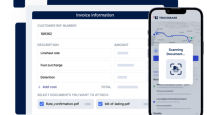Software Companies Help Trucking Companies Gain Snapshot of Their Financial Performance
New accounting software applications enable trucking companies to do far more than digitize their general ledger.
With programs now available, businesses can turn mountains of raw accounting data into computerized snapshots of a fleet’s financial status.
A common buzzword for this process is “analytics.” A common term for the tools that make it possible is “business intelligence software.”
On the financial side of the business, such software can be used to gather and analyze the data a company generates in its day-to-day operation, turning it into computerized reports that give decision-makers a detailed picture of their organization’s financial performance.
Less-than-truckload carrier Pitt Ohio Express, Pittsburgh, uses this type of software to create reports for managers that reveal exactly how profitable — or unprofitable — each individual customer’s freight has been for the company, an executive said.
“We went outside the traditional accounting mode [to] dig down to the next level [and] understand customers’ profitability on an individual basis,” said Scott Sullivan, Pitt Ohio’s chief financial officer and chief information officer.
This process has allowed Pitt Ohio to eliminate general rate increases, because the profitability reports generated by the carrier’s analytical software allow managers to mete out rate increases as needed, Sullivan said.
The company has made a good return on its investment in the software, Sullivan said, estimating that “within the first year [of use], the analytical software paid for itself.” Moreover, the software helped improve Pitt Ohio’s operating ratio “by 2% to 3%,” he said.
Truckload carrier Celadon Group, Indianapolis, also has paired its accounting software with analytical and business intelligence programs in an effort to make “all of our key performance metrics . . . available on a daily basis,” said Bart Middleton, a Celadon vice president and its controller.
Those key metrics include Celadon’s rate per billed mile, number of loads hauled, miles per load and revenue per day, Middleton said.
Celadon’s business intelligence platform collects the data and molds them into reports that can help the company identify problems such as billing inconsistencies or insufficient fuel surcharge rates, Middleton said.
Before Celadon installed the software, reporting and analysis functions — which are now essentially hands-free — were performed manually, he said.
Middleton said Celadon employees were tasked with sifting through databases filled with electronic invoices, bills and other digitized records and organizing them into reports that were then printed on spreadsheets.
A lengthy, resource-consuming process provided Celadon with only a retrospective glimpse of its operations, Middleton said. But now, reports covering the previous 24 hours of Celadon’s operations are compiled automatically by a software program every morning at about 3 a.m., then sent by e-mail to top-level executives and dispatch managers.
“When you walk into the office every morning, that information is available,” Middleton said.
On the vendor side, an executive with software developer TMW Systems also highlighted the need to provide such reports both to fleet higher-ups and to lower-level operations personnel.
“That poor dispatcher or planner, who doesn’t even have authority to buy a whiteboard, is making decisions moment by moment that affect the profitability of a company,” said David Mook, TMW’s vice president and chief technology officer. “So you have to provide that data back to the operators.”
Other technology executives also noted the increasing importance of tapping into accounting data with business intelligence and analytical software.
Accounting “systems today [are] much more . . . able to pull out and manipulate numbers and use tools such as business intelligence [software] to really drill down,” said Ken Weinberg, vice president of software developer Carrier Logistics Inc.
CLI’s software caters mostly to less-than-truckload carriers. Among the company’s offerings are billing and financial administration applications, both designed to interface with CLI’s operational software programs.
“Accounting numbers have to be available to be integrated . . . so you really get a true picture of your company,” Weinberg said.
Meanwhile, “the availability of business intelligence systems is really revolutionizing the way . . . carriers are approaching the evaluation of their business,” said Ken Manning, president of Transportation Costing Group, a Bethesda, Md., software company.
Part of that change is that “carriers are using a lot more analytics [to find] a problem before it becomes overwhelming,” Manning said.
For example, a key part of TCG’s service involves tapping into a carrier’s digitized general ledger and creating what Manning called “activity-based reports,” based on the company’s most current financial data.
These reports can help planners and dispatchers determine which loads their fleets hauled at a profit and which loads at a loss, allowing them to cut unprofitable loads out of their freight mix and redirect trucks to more profitable shipping lanes, Manning said.
An executive with McLeod Software in Birmingham, Ala., likewise noted that the trucking industry, already fighting to maintain razor-thin margins, has become “much more reporting- and cost-conscious” in the current environment of unprofitable freight and unprecedented fuel prices.
The company has “been doing a significant amount of development on [its] Profitability Analysis module,” said April Simpson, McLeod’s product-development manager and a certified public accountant.
Profitability Analysis, McLeod’s in-house business intelligence software, “really is general ledger related” and is designed to give users a bird’s-eye view of the profitability of individual customers, freight lanes, drivers or trucks, said Matt Cacace, the company’s chief operating officer.
Sullivan categorized this approach to business intelligence software “really is general ledger related” and is designed to give users a bird’s-eye view of the profitability of individual customers, freight lanes, drivers or trucks, said Matt Cacace, the company’s chief operating officer.




